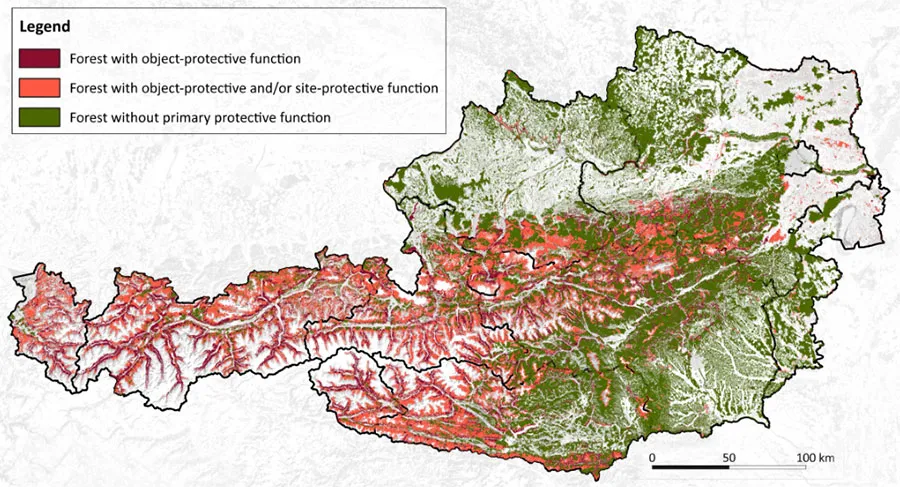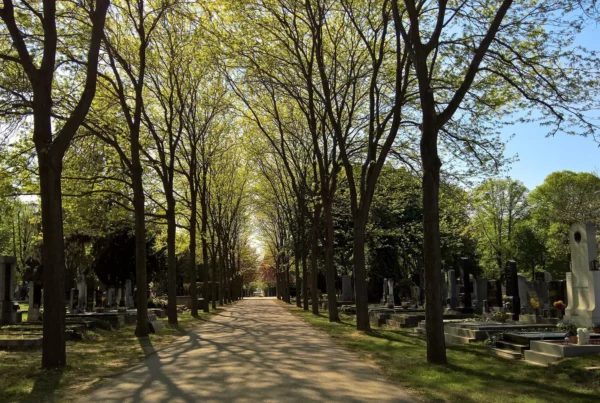In a recent interview on the eve of his inauguration, President Trump stated that California and others can “learn from [Austria’s and Finland’s]” effective and profitable forest management and forest health. Almost 50% of Austria is covered by forests and it has a very long history of taking care of these. Trump’s praise for Austria’s forest management should result in a creative, cooperative and productive response from Austria including offering to provide its forest experts, experience and technology to control and end the California wildfire catastrophe. President Trump is set to visit California on Friday, 24 January 2025.
Frances Mautner Markhof and Diana Mautner Markhof
22 January 2025
An exclusive iNewsmax interview with President-elect Donald J. Trump on 13 January 2025 discussed critical current issues, including the mismanagement by California of its raging wildfires, with Trump stating that “[Los Angeles] literally looks like [it] got hit by a nuclear weapon”.
To-date the wildfires have killed at least 27with many more missing. Residents have been forced to evacuate and two of the fires, in Pacific Palisades and Altadena, have caused widescale total destruction of entire villages. The fires have destroyed more than 15 000 structures and charred some 63 square miles. The number of displaced persons is likely to be between 150 000 and 200 000.
Adding to this tragedy, many Californians’ houses are uninsured, because many insurance agencies have left California owing to the high cost of insurance and other restrictive local regulatory measures on the insurance industry.
The fires, which began on 7 January and are still raging, are comprised of a series of almost a dozen individual catastrophic wildfires which are encircling the metropolitan area of Los Angeles. The fires were fueled by an ongoing 8-month drought, low humidity and the hurricane-force Santa Ana winds which typically occur at this time of the year. The winds have reached 100 miles per hour (160 km/h). Not only have firefighters been unable to put out the fires, winds are expected to pick up in the coming days and it is also feared that more fires will break out.
California has not managed its forests properly. The vast underbrush was not cleared and this was the key element in feeding and spreading the fires, together with the mismanagement of water.
During Trumps first Presidency, he demanded California preserve water coming from snow melts from mountains in the north, which would have flowed right through Los Angeles. He personally strongly criticized Governor Gavin Newsome about brush clearances and maintaining California‘s forests. In 2018, he told him “You are going to have a real problem someday.” His words of warning were frighteningly prophetic.
The tragic impacts and destruction of the wildfires has led to California’s public officials, including Los Angeles Mayor Karen Bass and California Governor Gavin Newsome, being criticized for not managing the wildfires correctly and not preparing California for such catastrophic wildfires. Governor Newsome has responded to this criticisms by calling it misinformation.
Referring to California, Rob Schmitt asked how a state which receives USD 250 billion in federal funds per year and has a yearly problem with wildfires has so far not managed to “figure out water”, despite having a long coast of 840 miles (1352 km) along the Pacific Ocean.
During the Newsmax interview, Trump praised Austria and Finland for their forest management. He specifically praised how Austria is a model for forest management. There are very few forest fires in Austria. Trump stated that California and others can “learn from [Austria’s and Finland’s]” effective and profitable forest management and forest health.
Austria and Finland are forest nations. In Austria, with a population of c. 9 million, about 300 000 people live directly or indirectly from forestry and in 2023 Austria’s ski tourism, which depends on safe management of forests, employed 250 000 people.
Protective forest cover in Austria
 Federal Ministry Republic of Austria
Federal Ministry Republic of Austria
Agriculture, Forestry, Regions and Water Management
Basic date © BEV, 2022
Technical Data: BFW, LFD, BML – Abt. III/4, 2022
Layout & design of base map: LFRZ GmbH 2021
Data evaluation & design of technical data: WLV – Fachzentrum für Naturgefahreninformation, 07/2022
Austria is a landlocked country in the heart of Europe and almost half (47,9%) of its land is covered by forests. Austria protects its forests and the wildlife and human population living in and around these forests through sustainable management. This involves appreciating the role forests play in the larger ecology system, biodiversity, Austria’s tourism industry and the economy. Austria exports high quality timber and is proud it preserves its natural landscapes. Having pristine forests and drinking water of the highest quality is part of Austria‘s collective consciousness and identity.
In Austria, the key to healthy forests that do not pose a threat to humans, is not only to give trees and forests the space they require, but also to “clean up” forests. Austria takes the health of its forests very seriously. Any kind of pest, especially the bark beetle, is vigorously destroyed. These pests have the ability to greatly increase the risk of forest fires.
In California the danger of landslides has increased dramatically as a result of the wildfire. The reason for this is twofold: 1.) the fires have killed the vegetation and trees necessary to keep the hillsides stable; and 2.) the water used to put out the fire has loosened the ground. Houses which survived the fire have now been destroyed or are in danger of being destroyed by mudslides.
As a top tourist and ski destination, it is national policy to preserve forests and build and manage safety measures against avalanches and landslides. These safety provisions include external structures built into the side of mountains and preserving a so-called green infrastructure, which is the forest itself. On steep slopes in Alpine regions, protective forests prevent erosion and can minimize or completely prevent many risks associated with landslides and avalanches. Without this highly valuable “green” infrastructure, human settlements and Austria‘s ski /tourist industry could not flourish in mountainous regions.
Austria’s commitment to healthy forests has a long tradition. The precursor to Austria’s Federal Forest Office was founded by Austrian Emperor Franz Josef in 1874 as the Imperial Forest Research Management Institute. There can be no better proof of the importance Austria has always attached to preserving its forests.
Austria‘s Federal Forest Office, established in 2005, employs specially trained personnel of the Federal Research and Training Centre for Forests, Natural Hazards and Landscape. According to the website of the Federal Forest Office and in accordance with its laws, a Federal Research and Training Center for Forests, Natural Hazards and Landscape was established as an institution under public law. A strict import regime regarding timber, plants and plant products, in line with EU regulation, is essential to avoid the introduction of harmful organisms.
In July 2020, the Austrian Parliament passed the Forest Fund Act including a EUR 350 million package of measures. This law helps preserve forests and offers incentives for investment and relief for agriculture and forestry in Austria. The law lists ten measures:
“1) Reafforestation after calamities
2) Establishment of forests that are fit for the climate – forest tending
3) Compensation for bark beetle damage caused by climate change
4) Establishment of storage sites for calamity timber
5) Mechanical debarking as forest protection measure
6) Ensuring forest fire prevention and control
7) Research facility for the production of wood gas and biofuels
8) Research priority “climate-fit forests”
9) Timber construction offensive
10) Strengthening, maintaining and promoting biodiversity in forests”
Trump’s praise for Austria’s forest management should result in a creative, cooperative and productive response from Austria as soon as possible, including offering to provide its forest experts, experience and technology to control and end the California wildfire catastrophe. President Trump is set to visit California on Friday, 24 January 2025.







